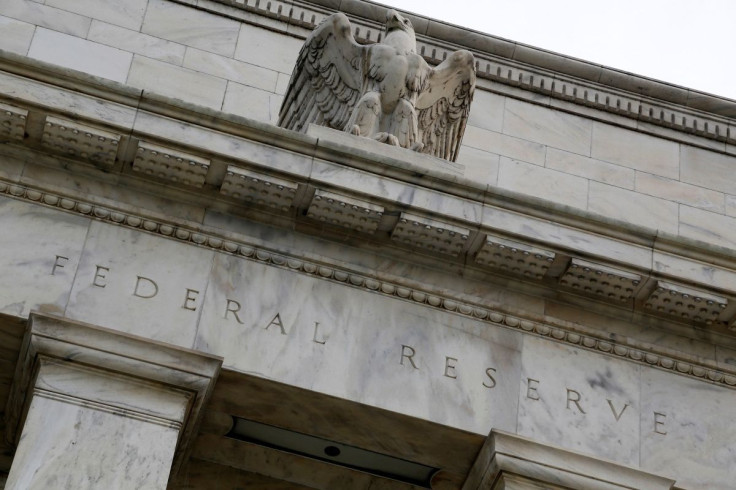Analysis-U.S. Recession Fears Beckon Investors Back To Painful Treasuries Trade

Growing worries about a potential recession in the United States are tempting some investors back into the Treasury market, despite bruising declines in U.S. government bonds throughout the first half of 2022.
Surging U.S. inflation and rising interest rates have dulled the allure of Treasuries this year, dealing bond prices their worst first-half performance since at least 1973 after a 40-year bull market.
Treasuries, however, have become more attractive recently on fears that the Federal Reserve's hawkish monetary policies will bring on a recession that pushes the U.S. central bank to stop or slow its rate hikes sooner than expected.
The yield on the benchmark 10-year Treasury , which moves inversely to prices, was around 3.00% on Thursday, after reaching an 11-year high of 3.498% in mid-June. Investors have sent a net $614 million to the iShares 20+ Year Treasury Bond ETF in the week ending June 29th, the largest positive inflow since late May, according to Lipper data.
Treasury prices have rallied several times this year only to collapse to new lows, and some investors believe persistently high consumer prices and an inflation-fighting Fed will eventually reverse the current move. Expectations of higher rates tend to pull up bond yields and depress prices, while inflation erodes the value of a bond's future cash flows.
Others, however, are building long-term positions in the hopes that recession concerns will help Treasury prices find a bottom.
"We feel that Treasuries around the 10-year level are attractive again and could be a good hedge for risk assets," said Maria Vassalou, co-chief investment officer of multi-asset solutions at Goldman Sachs Asset Management. Vassalou has reduced exposure to small-cap equities in the portfolios she oversees in anticipation of a recession while adding to Treasuries exposure.
FOCUS ON DATA
A good deal depends on whether upcoming data, including Friday's U.S. employment report for June and next week's consumer prices release for the same month, show evidence that the 150 basis points of monetary tightening already delivered by the Fed is slowing growth and cooling prices.
Data showing inflation running at its hottest pace in more than four decades slammed stocks and bonds last month and was followed by a 75-basis-point interest rate increase by the Fed, its biggest hike since 1994.
Some more recent data have shown signs of a cooling economy, including a modest rise in consumer spending, softer housing starts and weaker factory output.
Worries over a global slowdown have also helped pushed oil prices to their lowest level since April, while a key part of the Treasury yield curve inverted earlier this week for the third time in 2022, once again flashing a closely watched recession warning.
"The Fed might not need to go that far in the medium-term to have its intended effects to bring down inflation," said Jake Schurmeier, a portfolio manager on the multi-asset solutions team at Harbor Capital Advisors who began adding to long-term Treasury positions in his portfolios in early June.
Investors now expect the Fed's benchmark overnight interest rate to peak at around 3.5% in March 2023 before falling to 3% by November of next year. A month ago, investors believed that rate would peak in July 2023. [FEDWATCH]
Fed policymakers have signaled a willingness to move interest rates as high as needed to tame inflation, which, by the central bank's preferred measure, is running at more than three times its 2% target. The Fed's so-called dot-plot, which shows policymakers' projections for where the policy rate is headed, maps out a median rate of about 3.8% next year, decreasing to around 3.4% in 2024.
A sustained rally in Treasury prices could mean relief for investors who have counted on bonds to offset declines in their equity portfolios. Twin declines in both asset classes have dealt a blow to so-called balanced portfolios, which are down by their largest margin since 1932, according to BofA Global Research.
Even bullish investors, however, see more big swings in Treasury markets after a wild first half.
Nick Hayes, head of global strategic bonds strategy at AXA Investment Managers, believes Treasuries would be an attractive buy if the 10-year yield rose back to around 3.4%. Even so, he expects plenty of turbulence ahead, as fluctuating narratives of inflation and recession roil markets.
It would take "a very brave person to say we've seen the highest yields on the government bond side," he said. "I think you have to assume that the next six months, maybe 12 months, are still going to be pretty volatile."
© Copyright Thomson Reuters {{Year}}. All rights reserved.




















